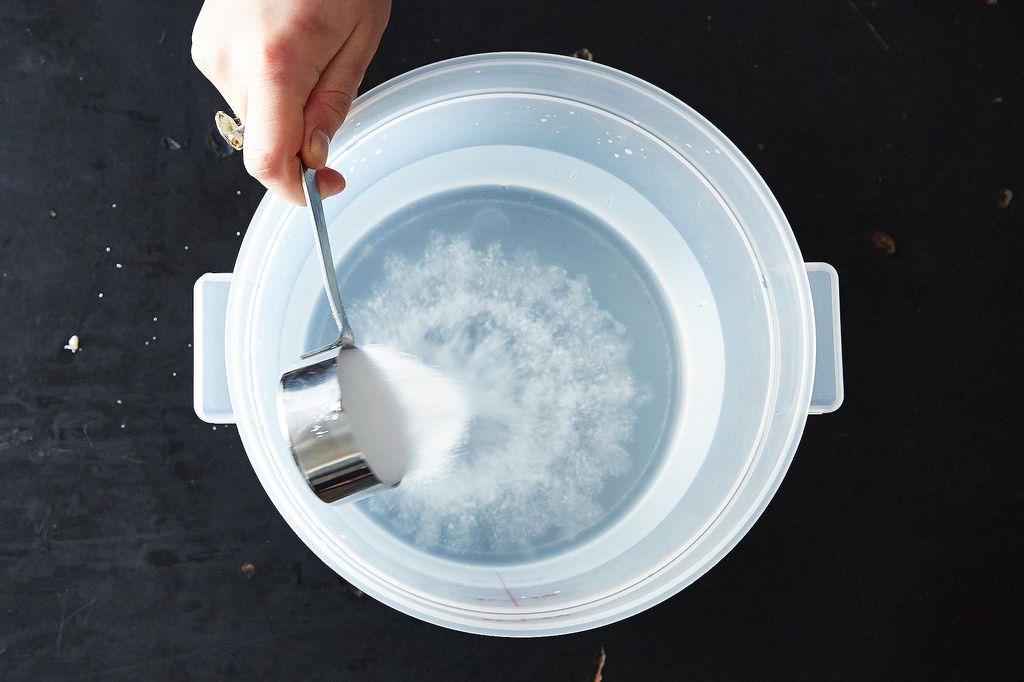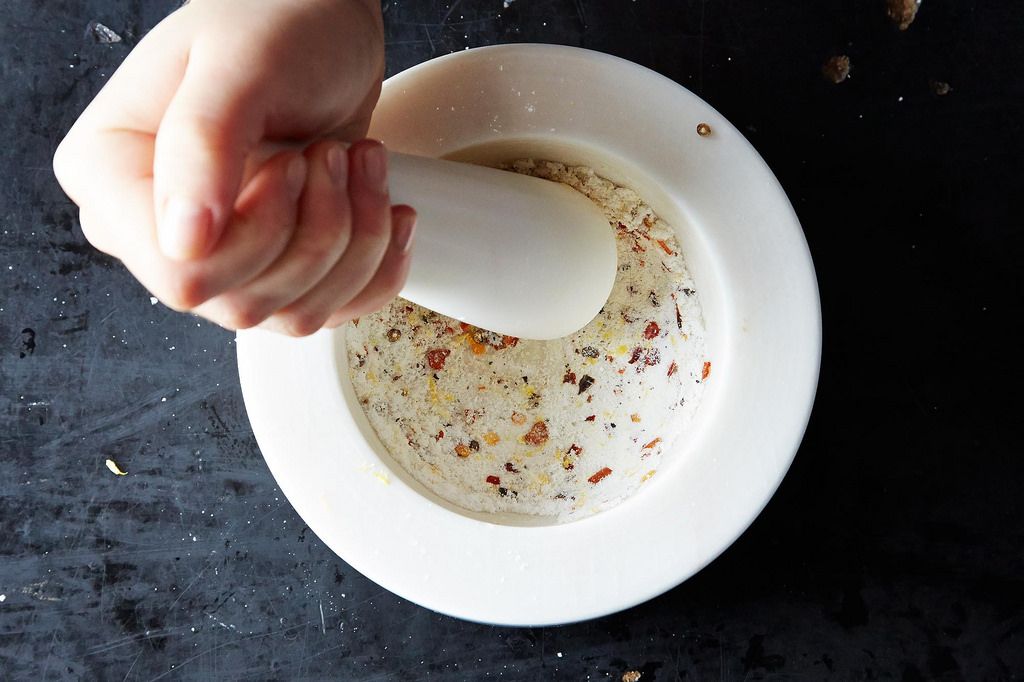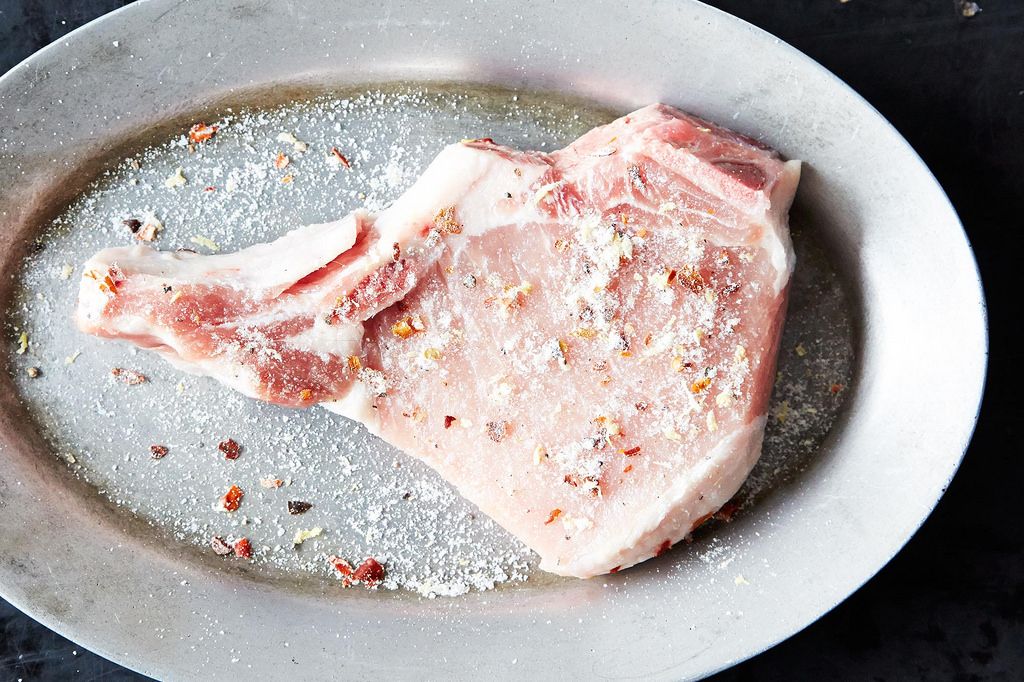Skin on Beef Is Soggy Before Cooking
Have you ever suffered the travesty that is a dry, tasteless chicken breast? Or tried to cut into a pork chop, only to be rewarded with a bicep workout and a rumbling stomach? Or chewed your way through a turkey that tastes like it might've been made out of sand? We have, too. It was unpleasant. Thankfully, it never has to happen again—just harness the power of science, and you can brine your way to consistently better meat. Brining meat should happen at least 12 hours in advance of when you want to cook the meat and can be done with water, salt, and sugar or a dry brine using a variety of herbs and spices. Here's why it works, and how to use our brine recipes for everything from a Thanksgiving turkey to everyday cuts of meat.
Why Do You Brine Before Cooking?
Brining was originally used for food preservation in the pre-refrigeration era. However, there are two solid reasons why you should brine your meat in the 21st-century: flavor and texture. Brining infuses the meat with savory, finger-lickin' flavors, all while tenderizing it to butter-soft texture. So how does it work?
Let us turn back the clock to seventh grade science class for a moment. Does the word "osmosis" ring a bell? That's how brining works: When you place meat in a bath of salty, flavorful liquid, the solution will travel into the meat in order to equalize the salt levels. This means that, before even hitting the heat, your meat has a higher liquid content—so when you cook it, your meat will lose the same amount of moisture, but will still end up juicier. As culinary expert and general food science nerd Harold McGee puts it: "This is one time when we find our old nemesis 'water retention' actually playing a beneficial role!"
While you brine, your meat is not only gaining liquid; it's also gaining salt, and the higher salt concentration will begin to break down its proteins. Think of the proteins in meat as tight, stubborn coils—then salt comes along, gives them a deep tissue massage, and they begin to relax. This yields a meat with a more tender mouthfeel and reduced chewiness. Kenji Alt-Lopez of Serious Eats sums it up perfectly: less tightening = less moisture loss = juicier meat.
What Meat Should Be Brined?
Some cuts of meats benefit from brining more than others. Drier, leaner meats are at the top of the list as cuts that could use a good ole brine, as they don't have as much fat to contribute moisture and flavor. Poultry breasts, pork chops, shrimp, and that infamous Thanksgiving turkey are all good candidates for brining. As barbecue season draws near, racks of ribs are also begging for a briny dip, which will help them retain moisture through a long smoke. Before purchasing a piece of meat to brine, check the label to make sure it hasn't already been injected with a salty solution. On the other hand, tender, smaller cuts of meat like a juicy filet mignon, fatty chicken thighs, and moist, flaky fish don't really need a wet or dry brine.
How Long Does It Take to Brine Meat?
A general rule of thumb is to leave your meat in its brine for roughly one hour per pound—never brine your meat more than the prescribed amount, lest the proteins break down too far, turning it into unappetizing mush. So for a 12 to 14 pound Thanksgiving turkey, an overnight brine in salt and water or with a flavorful dry rub will do the trick.
How to Wet Brine Meat
The basic ratio for any wet brine is one cup of kosher salt to one gallon of water. Make sure to fully dissolve the salt in the water. If you're feeling fancy, throw in some smashed garlic cloves, peppercorns, citrus (also smashed), or even a sweetener like honey or brown sugar. Or instead of water, feel free to use apple juice, which will give the poultry a sweet, autumnal flavor. Pro tip: If your meat has skin on it (hi, turkey), drain it, then pat dry a few hours before cooking time, and leave in the fridge, uncovered. It will end up juicy and tender, with shatteringly crisp skin that becomes beautifully golden brown when you cook the meat.

What Is Dry Brining?
Dry brining is technically a misnomer. The term "brining" implies a liquid, and dry brining could more accurately be categorized as a rub, or a "cure," for your meat. However, the end result is quite similar. By coating your meat in a salty dry brine, it both re-distributes moisture and pulls the seasoning deep into the meat. Dry brining is also a clean, simple seasoning option if you don't want to fill your fridge with large containers of submerged meats, for some reason. Like say if you're my in-laws who once spilled gallons of wet brine all over their newly renovated kitchen on the morning of Thanksgiving, approximately an hour before guests started to arrive at their house. (Oh yeah, true story.)


How to Dry Brine Meat
General dry brining technique calls for 1/2 teaspoon of kosher salt per pound of meat, plus whatever other (dried) herbs and spices you so choose. It's important to use kosher salt as it's significantly less salty than table salt. Pummel everything into a sandy texture with a mortar and pestle, then rub it onto your meaty canvas. Unlike a wet brine, dry brining a piece of meat takes a little longer.
Place the meat in a very sturdy Ziploc bag and refrigerate for one to 2 days (though if you're in a rush, just leave it in for as long as possible).Pro tip: Adding a pinch or two of sugar to your dry brine will help the meat caramelize as it cooks.

General Tips for Brining Meat
For a basic brine, it's important to follow a few very important food safety tips. To avoid scary bacteria like salmonella, always brine a piece of meat in the fridge. For the same reason, make sure none of your meat is exposed to the air, as this can increase the likelihood of contracting a foodborne illness. Always let your meat come to room temperature before cooking, as this will ensure that it stays tender and cooks evenly. And finally, if you are brining a turkey in a wet brine, pat it dry with paper towels before placing it in the oven to remove any excess moisture from the skin of the bird and ensure that it crisps up beautifully on the exterior. If you've got a brine? It'll all be fine.
Are you on team wet brine or team dry brine? Tell us in the comments!
Source: https://food52.com/blog/10405-how-to-brine-meat-and-why-you-should-bother
0 Response to "Skin on Beef Is Soggy Before Cooking"
Post a Comment